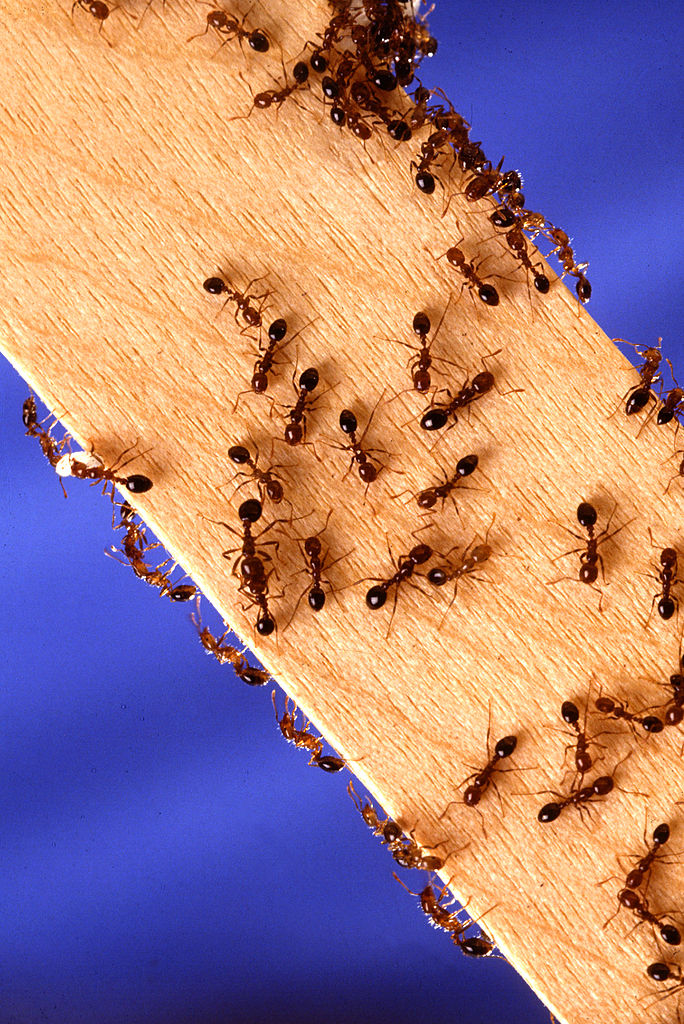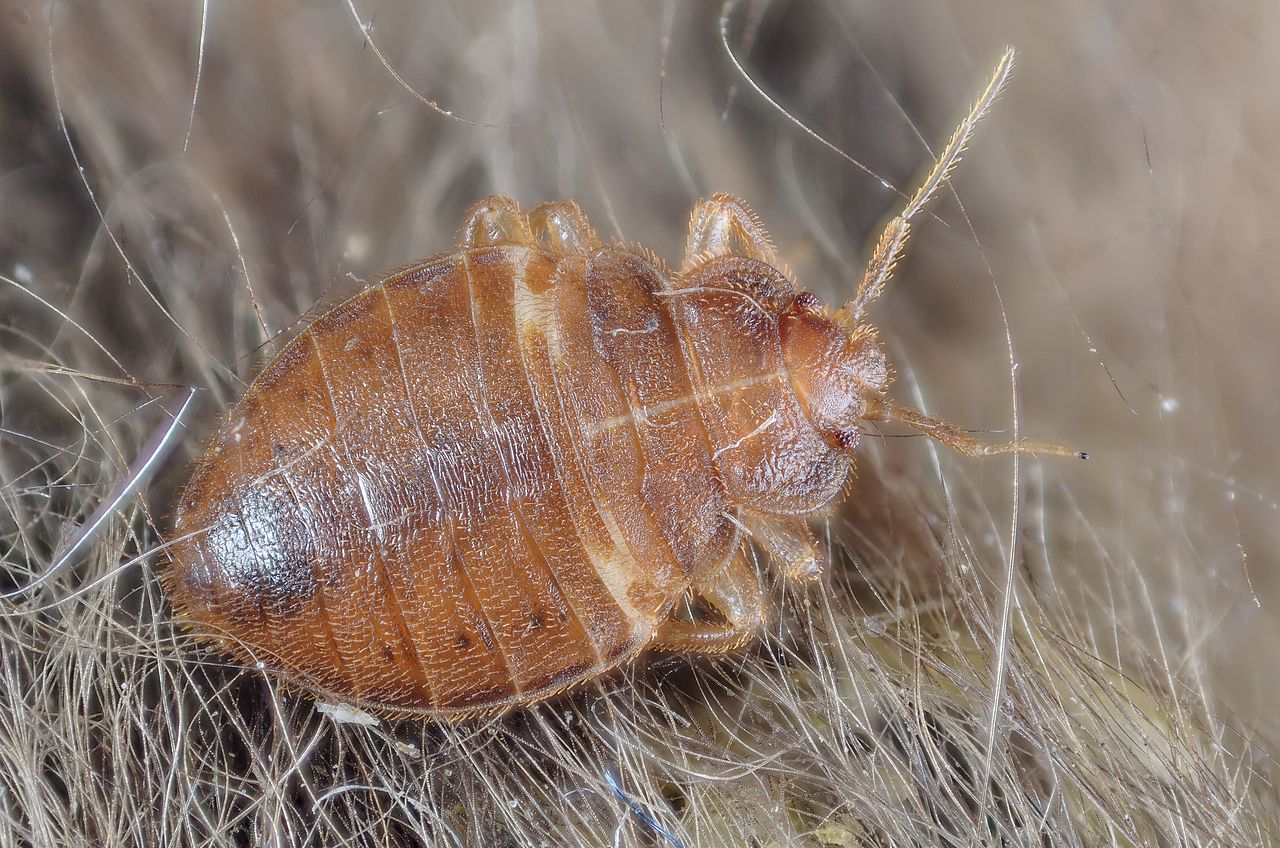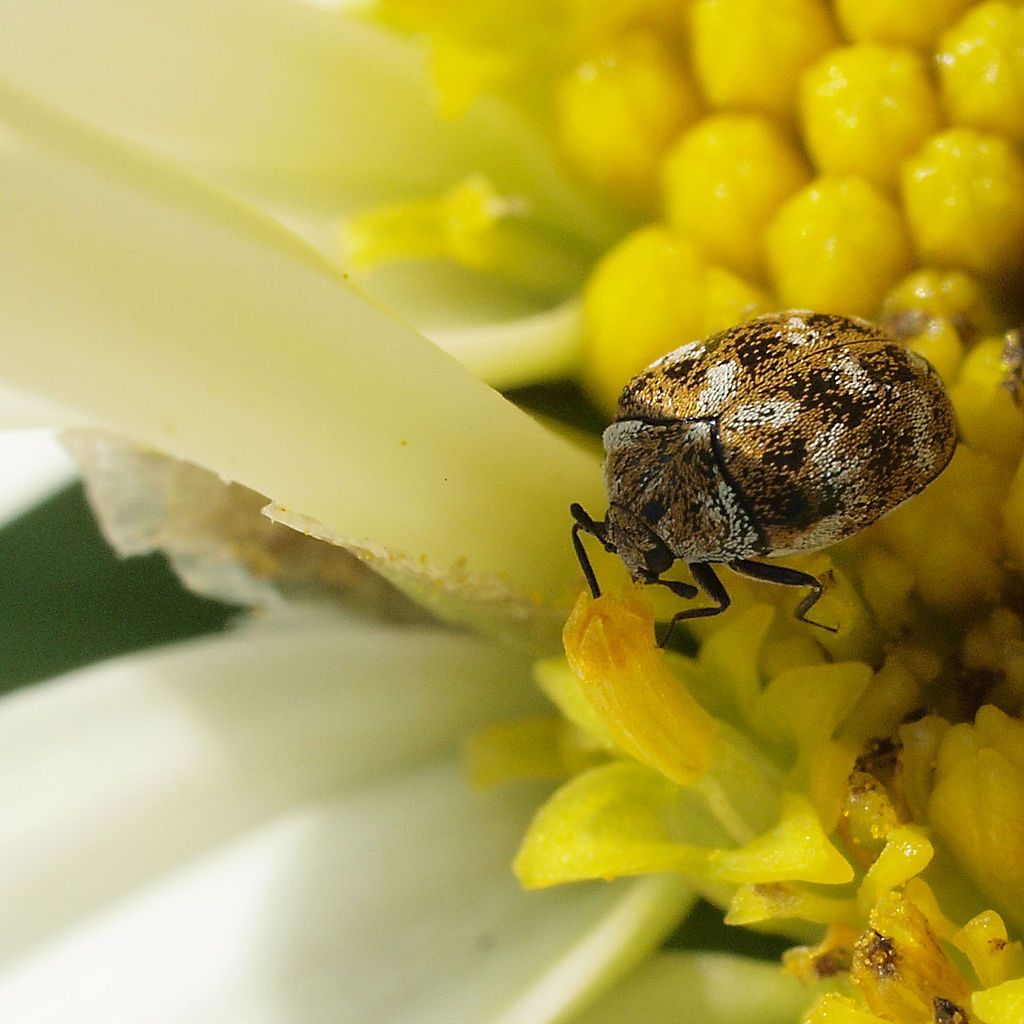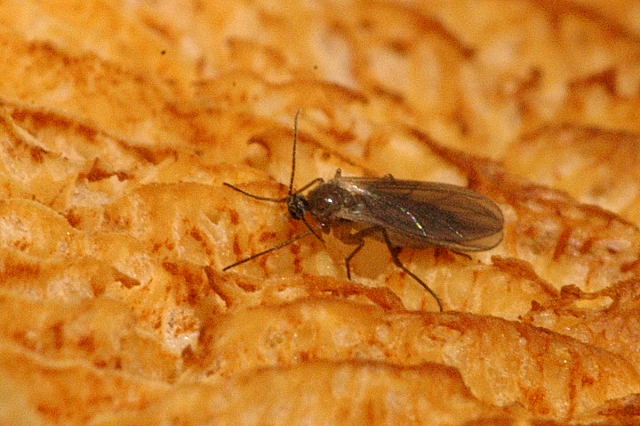Bugs get typically get in your car through open windows. They can live in cars temporarily or for longer periods, depending on the habitat they find.
Food traces and dirty cars favor bugs staying longer in cars. Most bugs use cars temporarily, however. They crawl into the car and out of the car opportunistically.
Food and juice spills tend to attract all types of bugs such as cockroaches and ants. Some bugs might even be attracted to organic matter such as hairs, nails, and dirt in your car.
Table of Contents
15 Types of Bugs in Your Car
From glove compartments to the stereo speakers, bugs can be found everywhere in cars. Many like the upholstery of cars to lay eggs in. Here are the most common bugs you can find in cars.
1. Cockroaches

Cockroaches might enter cars for shelter, but they mostly enter vehicles in search of food. Roaches like to feed on food traces and even on decaying food.
Leftover foods and spills attract cockroaches such as the German cockroach or the American cockroach.
Open car windows favor these types of bugs in your car, especially when parked next to the house or next to trash cans they use as nesting sites.
Cockroaches are identified by their oval-shaped body. They typically have a flattened body shape, 3 pairs of legs, and a brown color.
Roaches enter cars to find food. They also use cars as shelter to lay eggs.
Cars offer a safe environment away from rain or cold weather.
Brown-banded cockroaches and German cockroaches are 2 common species in cars.
Keeping them out involves the same task as keeping them out of the house. Regular cleaning help keep these roaches out.
2. Ants

Ants are problematic when found inside cars. They infest your vehicle and potentially damage it as well.
Fire ants are known to damage the electrical circuits of cars.
These ants have a dark red or brown body and the capacity to sting.
They are attracted to food and water in cars. Other species of ants can also get in cars.
Many ants are foragers. They gather food instead of preying on it.
They then carry this food back to their nests.
Many ants are attracted to sugary foods and sugar-rich liquids. Spilled juice is known to attract ants and flies.
This is the main reason to immediately clean your vehicle whenever you spill juice on carpets or seats.
Ants can infest many areas of the car which might make it more difficult to get them out.
Insecticide might be used to get ants out of cars.
Insecticide tends to evaporate within a few hours, but properly ventilating the car afterward is required as the insecticide is dangerous to your health.
3. Spiders

Spiders get in cars looking for food or by accident as they build spider webs under rarely used vehicles.
You can find spiders in your car whenever you park next to woodlands, shrubs, trees, or firewood where spiders like to live.
Some spiders are found in cars that rarely move while others can also be found in frequently used vehicles.
Various species such as the Huntsman spider are common in vehicles.
Both poisonous and non-poisonous spiders can be found in vehicles.
Many spiders are found in cars where they find food, such as insects and roaches. Spider webs can be built in cars that aren’t frequently cleaned, mostly to catch insects.
4. Bed Bugs – Common Bugs in Car Seats

Bed bugs rarely make their way into cars on their own. They are normally brought into the car by people with clothes or bags.
Bed bugs are some of the most problematic bugs you can find in cars as they bite.
Since vehicles offer upholstered seats, bed bugs can start multiplying, especially if they can bite people commonly.
You can identify bed bugs in your car by their small brown body. These bugs have an oval shape.
Bed bugs’ bites resemble those of other insects. You can expect red skin and itchy skin following the bite.
If you see these symptoms it might be a good idea to check your car for bed bugs. Most can be eliminated by using a strong suction vacuum cleaner.
5. Carpet Beetles – Tiny Black Bugs with Hard Shell in Cars

Carpet beetles get in cars to damage upholstery and to seek shelter.
These types of bugs have an oval-shaped body that’s white, yellow, and black.
Carpet beetles typically get in cars by chance. They are carried on clothes, especially if you already have them in your home.
Carpet beetles can settle in furs you wear in the winter. You can bring them into your car whenever you wear fur infested by carpet beetles.
At this point, carpet beetles can continue living inside the car, especially if they find something to feed on.
Carpet beetles eat wool, hair, dead insects, and even hairs. All of these can sometimes be found in cars.
Various methods such as fumigation are used to get carpet beetles out of the car.
Vacuuming the seats with a hot steam vacuum cleaner is also advisable to get these bugs and their larvae out of the car.
Some people are known for combining vinegar and water. Carpet beetles don’t like vinegar.
6. Thrips

Thrips are a common type of insect in cars. Resembling a needle by body shape, thrips feed on plants.
They suck the juice of plants for food.
Most damages caused by thrips are tied to plants. They spread over 20 common plant diseases.
Thrips can also make their way into cars, especially brightly-colored cars.
Studies show thrips are attracted to yellow. This is the reason why most thrip traps are yellow.
Like other insects, thrips might not stay in the car for a long time without food.
They only get into cars initially attracted to their color, which they might confuse with a tasty plant.
Thrips are immediately put off by certain scents such as soap or essential oils.
Neem oil is sprayed on cars that attract these insects.
7. Cicadas

Cicadas aren’t as big of a problem inside of the car as they are on the outside. You know you have a considerable cleaning task ahead of you whenever you hit a cicada with your car.
Hitting a cicada results in a sticky substance spread over the windshield which might be impossible to get out with water alone.
There are now data to suggest cicadas are attracted to heat. A running car has a hot engine or a car that has been out in the sun for a few hours is completely hot.
These are the situations known to attract cicadas.
If left unclean, cicada splatter can damage the surface level of your vehicle’s paint.
You might need to pressure wash the car and apply carnauba wax on your car whenever you don’t clean cicadas off the vehicle immediately.
One of the problems with a hot car is that the engine is the hottest. Cicadas can also get inside the engine either through the radiator or when hitting one on the highway.
8. Crickets

Crickets like to live outdoors. They are seen in the vegetation around the garden.
Some crickets may be found in cars, especially in the evening when they’re attracted to lights.
You risk attracting crickets whenever you live the headlights on. Open windows and interior car lights are also known to be a perfect opportunity for crickets to get inside the house.
The good news is crickets can be swept or vacuumed from the car.
Crickets are known for their medium-sized brown or black cylindrical body and chirping.
Most crickets are herbivorous. They only eat plants.
Other crickets such as Saga pedo are predatory. They eat all types of insects including aphids.
It’s best to frequently clean your car to eliminate all insects predatory crickets might be interested in.
Avoiding parking your car in a place with artificial light helps as well, as most crickets are attracted to light.
9. Wasps

Wasps are interested in hot cars. They like the heat of cars and they hover around the vehicle sometimes getting inside.
Wasps get inside through open windows but they can also get into the car by following air ducts to get through the air vents.
Some wasps believe cars radiate heat similarly to animals and predators.
This is why many wasps hover around the hottest and most accessible part of a car, its radiator.
Wasps tend to move along quickly, especially whenever there’s no food inside the car.
They will live in cars or be reluctant to live if they find roaches or other insects to feed on the inside, which is the case with dirty cars.
A clean car is free of bugs and roaches. Wasps can quickly detect roaches in the car so a washed and vacuumed vehicle is less likely to draw in wasps.
10. Weevils
Weevils are identified by their dark color body with an elongated snout. These bugs grow to 6mm and they can make their way into the car even as herbivorous species.
Weevils get in cars either attracted to light or to seek out fruit, which they can easily pick up.
These small bugs enter your car whenever you live interior lights on and when they find a small opening to squeeze through.
They are seen in higher numbers in cars with crumbs and leftover food, such as fruit.
Families with children are bound to have leftover fruits in cars that weevils love.
Bread, pizza, and scones might also attract these bugs as they seem to be fond of all wheat-based foods they find in cars.
Vacuuming is required to get these small bugs out of the car. Frequent vacuuming ensures there’s no food to attract them to the vehicle.
11. Stink Bugs

Stink bugs are a common sight in cars, especially just before their season starts.
They are mostly frequent in March when they begin to arise and mate.
Species such as the marmorated stink bugs can get in cars by accident, whenever you have your windows down when driving.
They also get into cars when the vehicle is parked. They make their way inside taking advantage of open windows or through old inadequate air filters.
Stink bugs can be seen in cars from March to April, during periods when nighttime temperature is still low.
These bugs seek out a warmer place such as cars to overwinter.
Stink bugs are rarely alone in cars as they can pick up scent trails of other stink bugs.
Vacuuming remains the most common method to eliminate stink bugs from your car.
12. Fleas

Fleas are some of the most dangerous insects that can get inside the car as they feed on human and animal blood.
These dark-colored oval insects get inside cars from pets or are carried by people.
Clearing out fleas from the car requires thorough cleaning or patiently waiting for them to die as they cannot survive without their host.
Fleas need to suck blood to survive.
Waiting for fleas to die naturally can take a long time. Fleas can survive up to 100 days without their host.
Cleaning the car and applying insecticide are needed to properly eliminate and kill fleas in cars.
13. Horse Flies

Horseflies are either gray or brown. They are attracted to cars as they confuse them with shiny water surfaces.
Horseflies lay eggs in water and they might enter cars thinking they can find water.
Some of the most common methods of keeping horse flies away from cars is spraying essential oils on the vehicle.
Peppermint essential oil mixed with water is often sprayed in cars to keep horse flies and other flies out.
14. Fruit Flies

Fruit flies are small insects that grow up to 4mm. They can enter cars looking for food.
These flies are known for eating fruit, particularly the outer side of fruits. They can also feed on plants, vegetables, and certain types of organic matter.
The decaying matter is also known to attract fruit flies.
Rotting fruit is the main reason fruit flies get into vehicles.
They can fly through small openings when the windows are down or use air currents to make their way through air vents.
Cleaning the car and the trunk is mandatory to keep these flies out. All food traces should be removed.
Apple cider vinegar is known to deter fruit flies faster. You can add an open bottle of apple cider vinegar mixed with water into the car (when parked) to make fruit flies leave the vehicle on their own.
15. Gnats

Gnats are small black flies that feed on fruits and vegetables. Their reduced size makes it easy for these flies to get into cars.
A dirty car with food traces is most likely to attract these flies. A clean car without any food traces is less likely to attract these flies.
Air fresheners with essential oils are known to repel gnats. Not all scents are off-putting to these flies, however.
Peppermint, eucalyptus, and lavender are among the scents these flies hate.
Using air fresheners with these essential oils and keeping the car clean are recommended to keep gnats out.
How to Get Rid of Bugs in Your Car
Bugs in the car are known to be a serious problem. Some bugs are only annoying. Others, such as ticks, can also pose health risks.
Keeping a car clean is the best method to prevent bugs and insects in cars. Here are the methods that work best against bugs in cars.
Keep windows closed
Lowered windows are an invitation for bugs nesting in the car. They can get inside the car when driving with lowered windows as well as when the car is parked with the windows lowered.
This is often the case during the summer when people leave windows down to avoid their car’s interiors overheating.
Remove foods from the car
Food in cars acts as a magnet for bugs and flies. Various types of food found in cars include fruits, bread, pizza, and snacks.
All of these foods attract bugs which may also attract predatory bugs in turn.
Even spilled drinks can attract many types of pests such as ants.
A clean car should be free from solid food and food crumbs. All spilled drinks should also be steam cleaned so that there’s no residual sugar or odors left in the car.
Vacuum the car
Frequent car vacuuming is a recommended preventive method against all bugs that enter vehicles.
A powerful vacuum cleaner is needed to suck out dirt, dust, and food traces from tight places in cars.
Some vehicles already infested by bugs need vacuuming with washing. Bugs such as carpet beetles and ticks require deep cleaning as opposed to simple vacuuming.
Wash the car regularly
Washing the exterior of the car is also important to keep all bugs out.
Bird dropping, squashed bugs, and dirty car exteriors are all known to attract various bugs.
A car that smells clean acts as a pest repellent. Certain car shampoos and bug sprays can be applied on the car so that bugs stay away.
Park away from garbage cans
The place where you park the car is one of the most important factors in possible bug invasions of vehicles.
The closer you are to forests and thick vegetation the higher the chances of bugs getting into your car.
If you park next to garbage cans you are also likely to see your car invaded by pests that live in garbage cans.
Roaches are a good example of a bug that can easily move from garbage to the car, especially when trying to find shelter in case the weather turns bad.
Switch off the lights
You might consider switching off interior car lights as soon as you exit the vehicle. Light attracts all types of bugs such as crickets.
Switching off the lights when the car isn’t in use is one of the recommended techniques to keep flies out at well.
You also risk having your car seen as a magnet for bugs and flies whenever you park in a well-lit area such as under a lamp post.
Cover bright cars in the summer
Some bugs are attracted to bright colors.
Thrips are attracted to yellow cars as they love yellow. Covering the car is recommended, especially when parked for a long time.
Thrips and other flies are attracted to bright colors which they can see from a long distance.
Covering the car also reduced radiated heat.
Many flies such as wasps are known to be attracted by the heat of the car in the summer. They might not go away from a parked car until it cools down in the evening after nightfall.
It’s best to use car covers in these cases as they prevent the car from overheating.
Plant lavender next to the parking space
Some types of plants are naturally-known bug and insect deterrents.
Lavender, peppermint, and eucalyptus are known to be rich in natural oils that keep bugs away.
These plants can be potted and added next to the parking space or in the garage so that flies and bugs stay away.
Other plants such as lemon and lemongrass might also work against flies, but to a lesser extent compared to lavender.
Summary
Bugs get in cars looking for food or trying to escape bad weather. A smaller percentage of bugs get in cars attracted by vivid colors such as red or yellow paint.
Keeping bugs out of the car requires regularly cleaning the car. Washing the car exterior and the underside of the car frequently is best.
Vacuuming the interior of the car is mandatory. Food traces are known to attract the most number of bugs inside the car.
Fruit flies look for decaying fruits while cockroaches can eat any type of decaying food found inside the car.
People with children or pets are most likely to have food traces around the vehicle that attract bugs and flies.
Vacuuming and washing upholstery is needed in case of juice spills or in case you spill any other type of drink in the car.